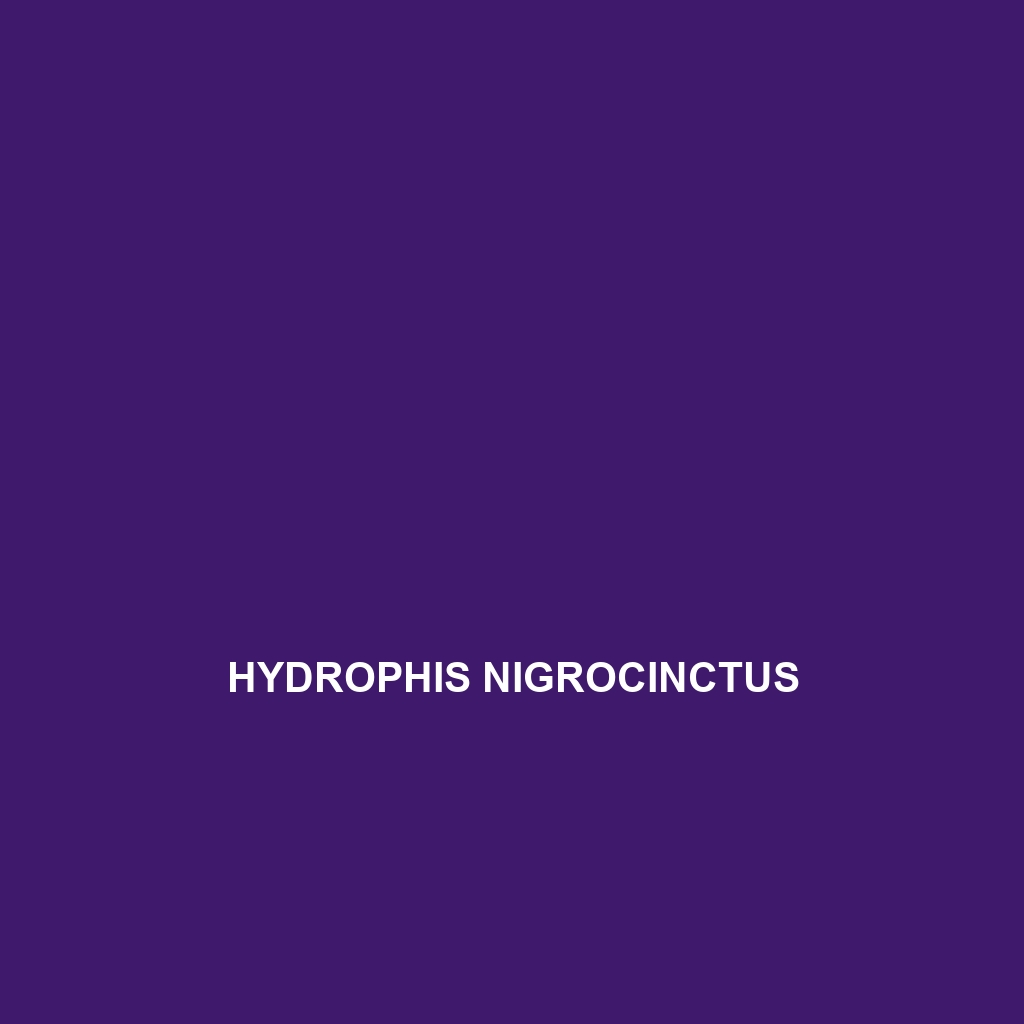Common Name
Hydrophis melanosoma
Scientific Name
Hydrophis melanosoma
Habitat
Hydrophis melanosoma, commonly recognized as the black sea snake, primarily inhabits marine environments in the warm coastal waters of the western Pacific Ocean. This species is typically found in shallow marine habitats such as coral reefs, sandy bottoms, and estuaries within tropical and subtropical regions. These areas often provide ample shelter and food supply, making them ideal for the black sea snake. The climactic conditions that support its habitat range from warm, temperate waters to the higher salinity levels prevalent in coastal ecosystems. As a highly adaptable species, Hydrophis melanosoma can thrive in environments characterized by varying levels of salinity, including brackish waters commonly found in mangrove swamps.
Physical Characteristics
Hydrophis melanosoma exhibits remarkable physical features that include a streamlined body adapted for swimming, with adults typically measuring between 1.6 to 2.4 meters in length. The snake is notable for its striking coloration, featuring a distinctive black or dark brown body with lighter, sometimes yellowish, bands or markings that can vary among individual specimens. Its flattened tail aids in propelling through the water, while its elongated neck is equipped with specialized nostrils positioned on the top of its head, allowing for easy breathing while swimming. The smooth, shiny scales contribute to its hydrodynamic abilities, facilitating swift movement through its aquatic environment.
Behavior
Behaviorally, the black sea snake is primarily diurnal, engaging in most of its hunting and foraging activities during daylight hours. Hydrophis melanosoma exhibits solitary behavior, but during the mating season, these snakes may be observed in pairs or small groups. Migratory patterns may occur when they seek breeding grounds or more suitable water temperatures. Their social interactions are often limited, as they tend to be territorial, especially females during nesting periods. These snakes are adept swimmers, utilizing their flat tails to navigate through the water and hunt for prey. Interestingly, they are known to bask on rocks or floating debris, where they can absorb warmth from the sun.
Diet
Hydrophis melanosoma is a carnivorous species, primarily preying on small fish, eels, and other marine organisms. Their diet is essential for maintaining their energy levels, especially given their high metabolism. They are skilled hunters, using their acute vision and sense of smell to detect prey from a distance before striking. The black sea snake utilizes its venom to immobilize and digest prey, which is a vital adaptation for its survival in the competitive marine environment. The typical feeding pattern involves ambush tactics, wherein the snake patiently waits for unsuspecting fish to swim too close before striking with precision.
Reproduction
The reproductive cycle of Hydrophis melanosoma is fascinating, marked by a unique strategy known as ovoviviparity, where eggs develop and hatch within the female, giving birth to live young. Mating generally occurs during warmer months, coinciding with the abundance of food, which supports successful reproduction. Gestation lasts approximately six to seven months, resulting in the birth of 4 to 14 live offspring, depending on the individual snake’s health and environmental conditions. Parental care is minimal, as the young are independent shortly after birth, equipping themselves for the challenges of survival in their marine environment. This adaptation enhances their chances against predation and ensures that they can fend for themselves from a young age.
Conservation Status
The conservation status of Hydrophis melanosoma is currently classified as “Least Concern” by the International Union for Conservation of Nature (IUCN), though localized threats exist due to habitat destruction and pollution. Despite its relatively stable population in some regions, the black sea snake faces challenges from climate change, which affects water temperatures and coral reef health. Additionally, accidental bycatch in fishing operations poses a significant risk, as these snakes can become entangled in nets. Ongoing conservation efforts focus on habitat preservation and raising awareness of the species to promote its protection in its natural environment.
Interesting Facts
Hydrophis melanosoma possesses several intriguing features that pique the interest of researchers and nature enthusiasts alike. One fascinating aspect is its remarkable ability to tolerate high salinity levels, which is a rare adaptation among reptiles. Additionally, their venom, while potent enough to subdue prey, is not considered dangerous to humans; however, caution should always be exercised when encountering this species. Another curious behavior is its capacity to dive to great depths in search of prey, capable of holding its breath for significant periods while submerged.
Role in Ecosystem
Hydrophis melanosoma plays a crucial role in maintaining the health of marine ecosystems by acting as both predator and prey. As a predator, it helps regulate fish populations, contributing to the ecological balance within its habitat. Its presence indicates the health of coral reefs and marine systems, thus acting as a bioindicator species. Furthermore, by preying on smaller fish, the black sea snake assists in promoting diversity within marine life. The interaction of Hydrophis melanosoma with other species underscores its integral part in sustaining the health and stability of its ecosystem, demonstrating the importance of preserving this unique marine reptile.
